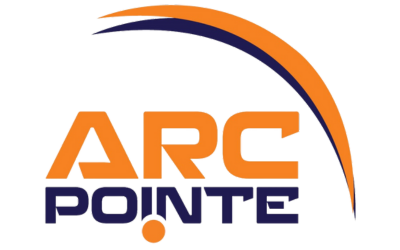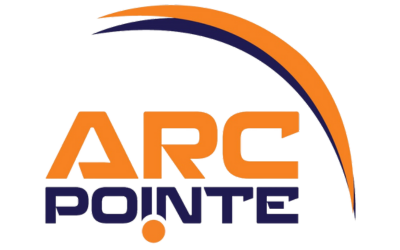
Introduction
Healthcare teams thrive on timely communication, accurate information and dependable scheduling. A virtual assistant medical receptionist (VAMR) gives you all that remotely answering calls, scheduling appointments, verifying insurance, supporting telehealth and keeping patient records tidy—so clinicians can focus on care not paperwork. Virtual assistant medical receptionists help healthcare efficiency by streamlining admin tasks and providing essential administrative support so healthcare professionals can spend more time on patient care and improve practice productivity.
By using cloud software and secure communication tools practices reduce overhead and increase responsiveness and patient satisfaction. These services help healthcare professionals focus on patient care by reducing admin burdens in a medical practice and further improve healthcare efficiency.
What is a Virtual Assistant Medical Receptionist?
A VAMR is a trained administrative professional who supports medical practices remotely. As a medical virtual assistant a VAMR can handle various tasks and office duties such as appointment scheduling, EHR documentation and patient communication to streamline workflows and support the practice.
Typical responsibilities include:
- Handling admin duties such as answering and routing patient calls and messages, appointment scheduling, medical records management, billing, insurance verification and claims processing
- Scheduling, reminders, cancellations and rescheduling
- Intake and registration via secure online forms
- Insurance verification and billing questions
- EHR data entry, documentation hygiene and chart updates
- Telehealth coordination and post-visit follow-ups
Unlike an on-site receptionist a VAMR scales up or down with demand, extends coverage beyond office hours and fills gaps without adding office space or equipment.
Key Responsibilities
Scheduling and Appointment Management
- Coordinate appointment bookings aligned to provider availability and visit type, with virtual patient care coordinators helping to schedule appointments and manage patient schedules
- Automate confirmations, reminders, waitlists and no-show recovery
- Balance schedule density with provider preferences and room availability
Patient Inquiries and Front-Door Triage
- Answer questions about hours, directions, procedures and prep, including handling patient calls as part of managing patient interactions and inquiries
- Capture messages for clinical teams and ensure timely follow-up
- Offer self-service links (patient portal, payment, forms) when applicable
Check-In, Registration and Intake
- Collect demographics, consent and clinical intake forms securely* Verify insurance and coverage before the visit
- Pre-populate EHR fields to speed up rooming and documentation
Insurance Verification and Billing
- Confirm eligibility, copays and prior authorizations
- Answer billing questions, process payments and set up payment plans
- Track claim status, assist with insurance claims and escalate denials for resolution
- Support patients with prescription refills as part of ongoing medication management and admin tasks
Patient Records and Documentation
- Maintain accurate EHR entries, attach documents and update contact info—use a virtual medical scribe to assist with real-time documentation and EHR updates
- Apply naming conventions, encounter types and visit reasons consistently
- Flag incomplete or conflicting data for clinical review
Telehealth
- Schedule virtual visits, test patient tech and distribute access links
- Provide pre-visit instructions, assist patients in reporting vital signs during telehealth visits and troubleshoot common issues
- Arrange post-visit follow-ups and capture patient feedback
Navigation and Referrals
- Direct patients to the right provider, service line or next appointment
- Coordinate referrals, imaging, labs and second opinions
- Share prep/post-care instructions written by your clinical team
Benefits for Medical Practices
Cost Savings
Reduce office overhead, hiring risk and downtime by using virtual medical assistant services that help reduce costs for medical practices. Pay only for the coverage you need (per-hour or per-FTE equivalents) and scale up during peak periods without long lead times.
Patient Access
Offer extended hours coverage (evenings/weekends) and after-hours request capture. Patients can schedule, ask questions and get help when it’s convenient for them.
Workflow and Fewer Bottlenecks
With a VAMR running the front-office loop—scheduling, reminders, insurance checks, documentation—practices benefit from improved workflow by streamlining admin tasks, allowing providers and nurses to get back to clinical care and quality initiatives.
Productivity and Revenue Integrity
Cleaner eligibility checks, fewer day-of surprises and faster claim submission means smoother days, more completed visits and stronger cash flow.
Patient Experience
Prompt, empathetic responses; clear instructions; and proactive follow-ups build trust. No-show rates fall, reviews improve and word-of-mouth grows.
Skills and Qualifications
- Healthcare literacy: medical terminology, visit types and privacy expectations
- EHR and PM knowledge: familiar with your specific systems and portals
- Communication: clear, empathetic, professional written and verbal skills
- Organization: task management, queue management, deadline ownership
- Patient focus: de-escalation skills and service recovery mindset
- Security & compliance: trained on HIPAA/privacy, access controls, secure channels
- Healthcare virtual assistants: make sure you choose healthcare virtual assistants who are HIPAA-compliant and experienced in providing medical virtual assistant services for secure, efficient and customized support.
How to Implement a VAMR Seamlessly
1) Define Outcomes
Set specific goals—e.g., “reduce no-shows by 20%,” “answer 90% of calls within 60 seconds,” “submit claims in <48 hours.”
2) Document Your Playbooks
Provide call scripts, scheduling rules by provider, insurance FAQs, portal workflows and escalation paths. Keep SOPs short, visual and easy to update.
3) Set Up Access Securely
Create unique logins with least-privilege permissions for EHR/PM, phones, email and portals, ensuring all access and permissions are HIPAA compliant. Enable audit trails and 2-factor authentication.
4) Start with a Focused Pilot
Begin with one service line (e.g. primary care or telehealth) or one provider panel for 2-4 weeks. Measure impact and refine workflows.
5) Measure, Report, Improve
Track KPIs weekly (first response time, abandoned calls, show rate, eligibility errors, claim lag, patient satisfaction). Share quick wins, address blockers and expand scope.
Use Cases by Practice Type
- Medical virtual assistants and medical virtual services support various practice types and healthcare specialties, providing HIPAA compliant solutions for both clinical and administrative tasks.
- Primary care: high volume scheduling, chronic care follow-ups, labs/imaging coordination
- Specialty clinics: prior auth management, prep instructions (e.g. GI, cardiology), post-procedure calls
- Behavioral health: virtual visits logistics, waitlist management, benefits checks
- Dental/orthodontics: recall campaigns, treatment plan follow-ups, financing coordination
- Telemedicine groups: multi-state scheduling, portal support, device readiness checks
Compliance and Security Requirements
Training and Security
- Train on HIPAA and your internal policies
- Use approved, encrypted tools and secure file exchange
- Standardize identity verification and consent collection
- Review access logs and permissions regularly
Long Term Partnership
At ARC Pointe Group, we know providers need more than a quick fix—they need a partner committed to their long term success. Our virtual medical assistants are built on a foundation of reliability, flexibility and ongoing support so you can focus on what matters most—patient care.
Our virtual medical assistants are trained to handle a wide range of administrative tasks from scheduling and insurance verification to patient coordination and remote patient monitoring. By managing patient calls, inquiries and follow-ups our virtual assistants ensure every patient interaction is handled with care and professionalism, improving patient satisfaction and operational efficiency.
We know every provider is unique, that’s why we offer customized solutions for your specific needs. Whether you need help with medical billing, claims, prior auths, medical scribing or more our expert virtual medical support reduces your clerical workload and administrative burdens so your in-house staff and medical professionals can focus on quality care and patient outcomes.
Security and compliance is at the heart of our services. Our virtual medical assistants are HIPAA trained and use secure messaging platforms to protect sensitive patient information and medical records. We prioritize patient data security at every step so you can trust your healthcare operations are compliant and patient data is safe.
Our commitment doesn’t stop at onboarding. We provide ongoing training and support for our virtual medical assistants to keep them up to date with the latest industry standards, technologies and best practices. Regular check-ins ensure our services meet your evolving needs and expectations so our partnership grows with your practice.
With ARC Pointe Group you get the flexibility to demand dedicated medical assistant support without the fixed hours or overhead costs of in-house staff. Our scalable assistant services adapt to your workflow, reduce operational costs, increase efficiency and maintain the highest standards of patient care. From administrative support to expert virtual medical support we are here to help you streamline healthcare operations and patient satisfaction.Our onboarding process is streamlined so you can get up and running with our virtual medical assistant services quickly, with HIPAA training and compliance support included. As your partner Neolytix is committed to your long term goals—helping you deliver quality care, patient outcomes and operational excellence in today’s fast paced healthcare environment.
Getting Started Checklist
- Identify peak hours and coverage gaps
- List top 10 call reasons and create response templates
- Map the scheduling rules per provider and visit type
- Create a denial/rejection playbook for common insurance scenarios
- Set up weekly huddles and a simple KPI dashboard
Conclusion
A virtual assistant medical receptionist is a multiplier for modern practices. By combining patient communication with workflow discipline a VAMR reduces no-shows, speeds up revenue tasks and frees clinicians to do their best work patient care.
Optional FAQ
What tasks can a VAMR handle?
Non-clinical admin: calls, scheduling, intake, eligibility checks, billing questions, documentation hygiene and telehealth logistics, all under your privacy and access rules.
Will a VAMR work with our existing EHR?
Yes, choose a partner experienced with your EHR/PM and set up role-based access, templates and audits.
How do we measure success?
First response time, call answer rate, show rate, scheduling lead time, eligibility error rate, claim submission lag and patient satisfaction.
Can a VAMR cover after hours?
Yes use extended coverage or voicemail/portal triage to capture requests and schedule next day callbacks.






